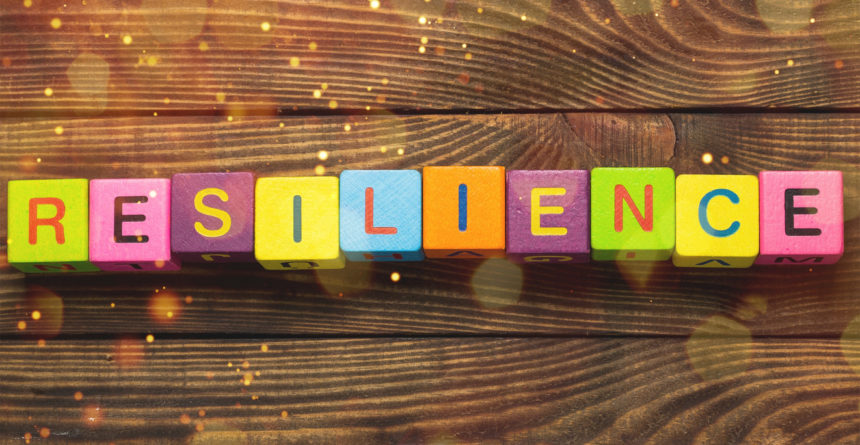Building Resilience: How Therapy Helps You Stay Resilient
January 10, 2020

To speak of building resilience, I first want to speak about physics. Physics defines resilience as the ability of a “strained body” to recover its size and shape after deformation caused by “compressive stress.” For example, think of a rubber band. A new rubber band is usually really tight. It’s ready to do its job of holding together a ponytail for a run, keeping important files together, or being an essential part of a pretty impressive rubber band ball. Yet, over time, the rubber band feels strain from stretching to complete its many tasks and duties. Over time, the rubber band loses its original shape or deforms. Take out the pony tail, relieve it from its paper holding duties, or pluck one off of a rubber band ball, and the rubber band goes back to its original shape and general size.
What Do Rubber Bands Have to Do with Therapy?
One of the major benefits of therapy is discovering our own resilience and building resilience practices for ourselves. Humans are a lot like rubber bands. First, we have a strained body. When we think of beginning our therapy journey, we often feel at the end of our ropes. We feel exhausted and stressed beyond belief. Maybe we’re having panic attacks. Maybe we can’t eat or sleep. We might be coping with overeating, drinking, exercising. Fighting with our partner, or coworkers has become more the norm than the exception. We are strained! We are like a rubber band that has been over worked.
So let’s say, we make it to the therapy room. I often hear from my clients, “I’m so tired of living this way, I’m exhausted, I can’t imagine going on one more second like this.” These phrases are from a part of them that is longing to recover the “size and shape” of their lives. This part longs to feel whole again, to release some tension, to take a break from holding everything and everyone together. The rubber band just wants to be a rubber band. No more or no less.
Building Resilience to Regain Our Shape
Now the work can begin. Often in the beginning of therapy, we take time to identify the “compressive stress” that has misshapen our lives and coping skills. We can identify how past trauma has shaped our sensitivity and responses to the often unpredictable environment of New York City. Therapy can shed light on the internal pressure many clients feel to succeed and “be the best” in all of our various roles of work, family, and relationships. The end result is often that we’ve forgotten that we too need care, love, and attention. Maybe we identify how our relationships might intensify shame in ourselves because blame cloaks the relational system.
When we recognize our stress, we can see how it’s changed us. Maybe we’ve used alcohol and other substances to help ease our anxiety. We might avoid important work functions, or don’t take the risk to audition for a part we crave to avoid disappointment. Family drama is our focal point, because it’s easier to try to fix other people, than to fix ourselves. These behaviors have stretched us too thin, we feel on the verge of breaking.
Honesty & Recovery
If this all sounds like a lot of scary, painful, and deeply involved emotional work, that’s because it is. And because taking this deep and honest look at ourselves is one of the most difficult practices we can engage in. It is also the bravest. Herein lies the resilience work. The moment we become honest with ourselves, and invite someone else (a therapist to start, but then the other people in our lives) to witness our authentic process, we begin to recover our size and shape.
Hope & Flexibility
In her book, The Gifts of Imperfection, Brené Brown speaks to the importance of hope and spirituality in the practice of building resilience. To have hope is to have the belief in ourselves that we can regain our shape and achieve the attainable goals we set for ourselves in therapy. Hope also allows us the opportunity to let go of our perfectionism and shame as it invites flexibility in how we achieve these goals.
You can twist, pull, and fling a rubber band across the room, and it still remains a rubber band. Hope is rooted in our ability to cultivate belief that we can remain centered and grounded amidst the events of life. This grounding is strengthened by our ability to connect to a power greater than ourselves, namely the great human experience, driven by love and connection. Rubber bands can become reinforced, and stronger by interconnecting them. They can reach greater distances, gain new purposes, and stretch farther than if they were just individually tested.
Exercising Resilience to Bounce Back
As we embark on a new year, I invite you to take stock of how stretched your rubber band is. What’s the compressive stress in your life? How has it influenced the way you live your life? Are you feeling strained?
Without judgement, feel how much elastic has been stretched, and how much you have left to give. Grant yourself permission to be honest, hopeful, and connected. We are able to give ourselves these gifts, because of the events that have stretched us. Not in spite of them. Resilience is inside of all of us, just waiting for us to exercise its ability to help us bounce back.
If you’re interested in chatting about how therapy might help you, build your resilience, we would be happy to talk with you about our psychotherapy services. You can schedule a free phone consultation at a time that works for you.



